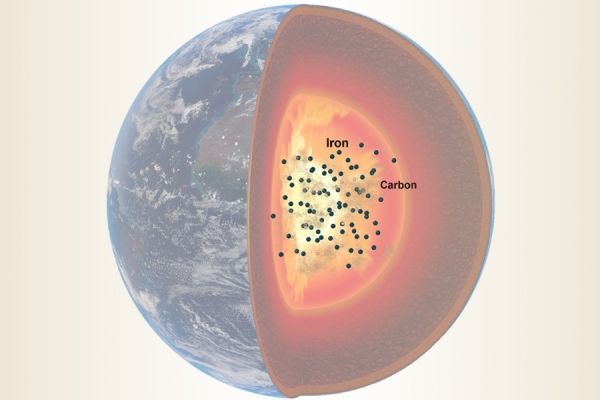New research from Florida State University and Rice University is providing a better estimate of the amount of carbon in the Earth’s outer core, and the work suggests the core could be the planet’s largest reservoir of that element.
The research, published in the journal Communications Earth & Environment, estimates that 0.3 to 2.0 percent of the Earth’s outer core is carbon.
Though the percentage of carbon there is low, it’s still an enormous amount because the outer core is so large. The researchers estimated that the outer core contains between 5.5 and 36.8 × 10^24 grams of carbon — an immense number.
“Understanding the composition of the Earth’s core is one of the key problems in the solid-earth sciences,” said co-author Mainak Mookherjee, an associate professor of geology in the Department of Earth, Ocean and Atmospheric Science. “We know the planet’s core is largely iron, but the density of iron is greater than that of the core. There must be lighter elements in the core that reduce its density. Carbon is one consideration, and we are providing better constraints as to how much might be there.”
Read more at: Florida State University
An image of the interior of the Earth illustrating a simulation by Florida State University and Rice University researchers to investigate the composition of the planet's outer core. Dark circles in the core represent iron and tan circles represent carbon atoms. The paths taken by carbon atoms during the simulation are shown by the tan lines. (Photo Credit: Suraj Bajgain)


